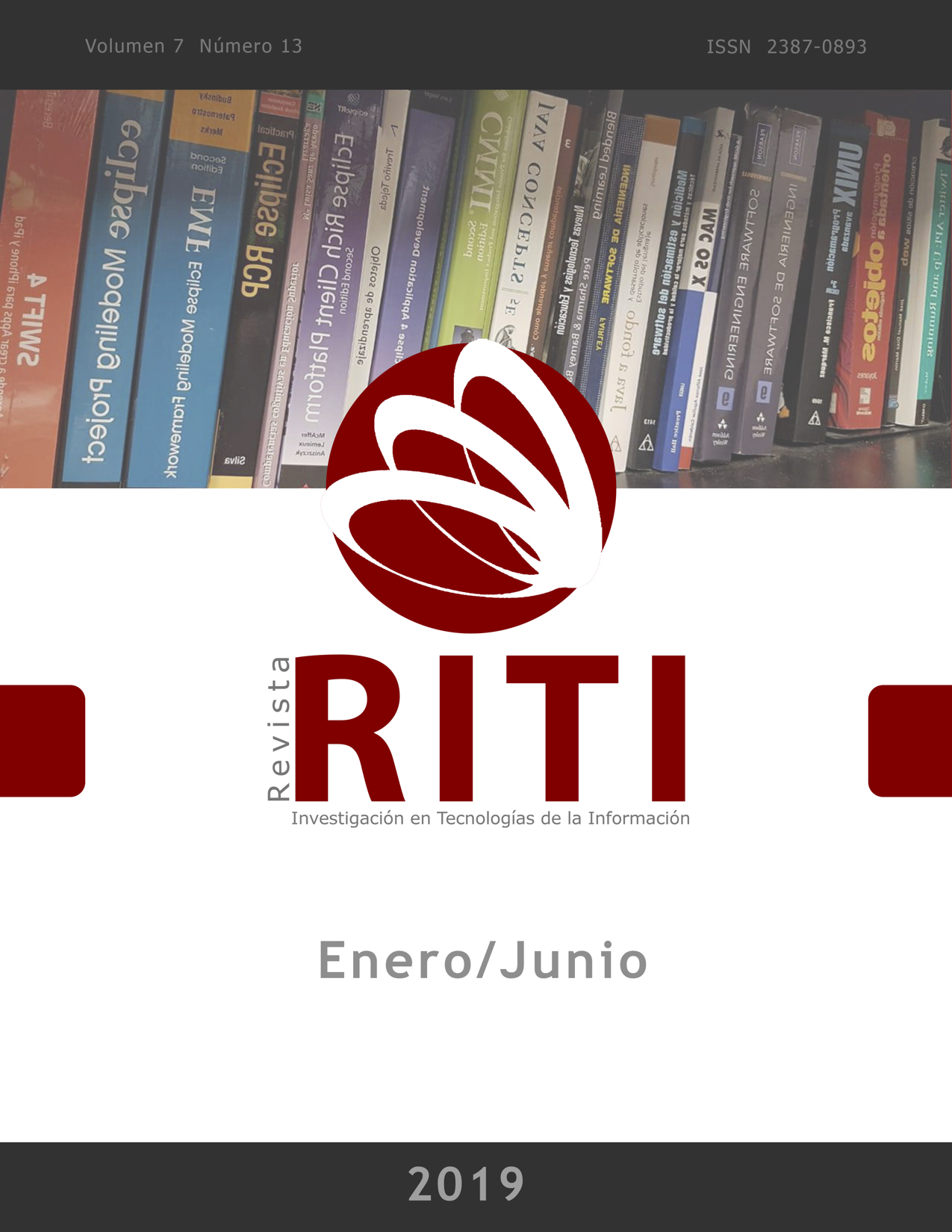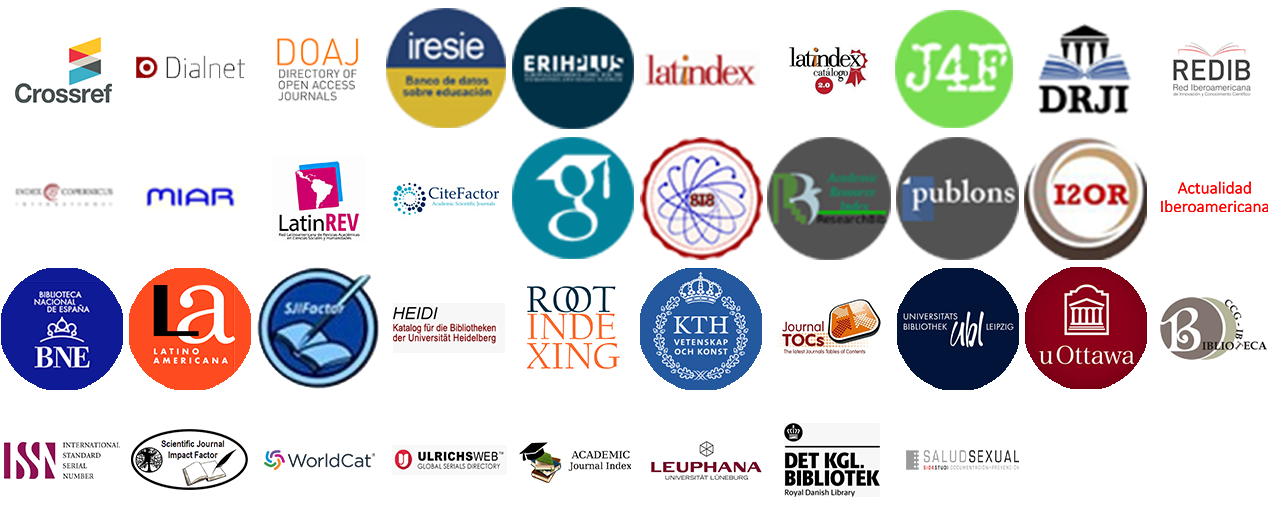STATISTICAL COMPARISON OF THE RELATIONSHIP OF DEPENDENCE ON USE OF THE UML WITHIN THE ENTERPRISE AND EDUCATIONAL SECTOR
Keywords:
UML, Contingency Tables, Software Tools, Company, EducationAbstract
The use of tools for software development, is an important part for the analysis of software project requirements, both for companies and in the curricula of the educational sector at the undergraduate level; one of the tools is the Unified Modeling Language. A study was conducted to evaluate, to what extent, both companies and universities use these tools; by using the statistical method x² (chi-square), which will help identify dependency relationships between qualitative variables, whose calculation will allow us to confirm with a certain level of statistical security whether the levels of the variables (use, utility, advantages, cases of usage, sequence diagrams, components and collaboration) of the companies and the education sector show cases of similar use, which will serve as a support in the decision making of the curricula content of the computer and computer systems majors.
References
Fowler, M., Scott, K. (1999). UML gota a gota. Naucalpan de Juàrez. Mèxico: Pearson.
Larman, C. (2003). UML y patrones: Una introducción al análisis y diseño orientado a objetos y al proceso unificado (2da Ed.). Madrid, España: Prentice Hall.
Rodríguez-Ponce E., Pedraja Rejas L., Araneda Guirriman C., González Plitt M., Rodríguez-Ponce J. (2012). El impacto del sistema de aseguramiento de la calidad en el servicio entregado por las universidades privadas en Chile. Revista chilena de ingeniería, 19 (3), 409-419. doi: http://dx.doi.org/10.4067/S0718-33052011000300010
Jiménez Ortiz, M. C. (2011). El discurso mundial de modernización educativa: evaluación de la calidad y reforma de las universidades latinoamericanas. Espacio Abierto, 20 (2), 219-238. doi: http://www.redalyc.org/articulo.oa?id=12218869001
De La Torre, S., Violant, V. (2006). Comprender y evaluar la creatividad (Vol. 1). Málaga, España: Ediciones Aljibe.
Basile, F., Chiacchio, P., Del Grosso, D. (2009). A two stage modelling architecture for distributed control of real-time industrial systems: Application of UML and Petri Net. Computer Standards & Interfaces, 31 (3) 528-538. doi: https://doi.org/10.1016/j.csi.2008.03.021
Booch G., Rumbaugh J., Jacobson, I. (2005). Unified Modeling Language User Guide (2da Ed.). Michigan: Addison-Wesley.
Zapata, C. M., Ochoa, Ó. A., Vélez, C. (2008). Un método de ingeniería inversa de código java hacia diagramas de secuencias de UML 2.0. Revista EIA, (9), 31-42. Recuperado de: http://www.scielo.org.co/scielo.php?script=sci_arttext&pid=S1794-12372008000100003&lng=en&nrm=iso
Torres Remon, M. (2013). Desarrollo de aplicaciones con JAVA Jcreatore-Jdeveloper NetBeans. Lima, Peru: Macro.
Vega C. N., Flórez Cediel. O. D., Arias Barragán, L. A., Rivas E. (2014). Distribution networks management system with multi-target operations using UML. En IEEE Andescon, Cochabamba, Bolivia.
Sparks, G. (s.f.). Una Introducción al UML. El Modelo Lógico. Recuperado de: http://www.sparxsystems.com.es/downloads/whitepapers/El_Modelo_Logico.pdf
Cañadas, G., Batanero C., Contreras J. M., Arteaga P. (2011). Estrategias en el estudio de la asociación en tablas de contingencia por estudiantes de psicología. Educación Matemática, 23 (2), 5-31. doi: http://www.scielo.org.mx/pdf/ed/v23n2/v23n2a2.pdf
Morales-Sánchez, M., Miranda Bojórquez, E. (2010). Modelo de desarrollo de software para diccionarios Etnobilingües. Ra Ximhai, 6(3), 445-451. Recuperado de: http://www.redalyc.org/articulo.oa?id=46116015012
Vicéns Otero, J., Medina Moral, E. (2005). Análisis de datos cualitativos. Recuperado de: https://docplayer.es/7353893-Analisis-de-datos-cualitativos-jose-vicens-otero-eva-medina-moral.html
Published
How to Cite
Issue
Section
License
Copyright (c) 2019 Revista de Investigación en Tecnologías de la Información

This work is licensed under a Creative Commons Attribution-NonCommercial-NoDerivatives 4.0 International License.
Esta revista proporciona un acceso abierto a su contenido, basado en el principio de que ofrecer al público un acceso libre a las investigaciones ayuda a un mayor intercambio global del conocimiento.
El texto publicado en la Revista de Investigación en Tecnologías de la Información (RITI) se distribuye bajo la licencia Creative Commons (CC BY-NC
 ), que permite a terceros utilizar lo publicado citando a los autores del trabajo y a RITI, pero sin hacer uso del material con propósitos comerciales.
), que permite a terceros utilizar lo publicado citando a los autores del trabajo y a RITI, pero sin hacer uso del material con propósitos comerciales.



